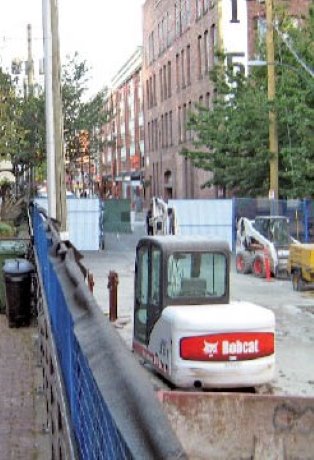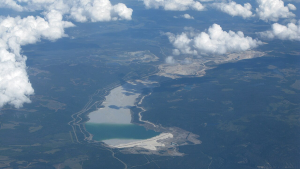A recent tunnel collapse in Boston that killed one person caught the attention of Transport Quebec, which operates several tunnels in the Montreal area.
Infrastructure
MONTREAL
A recent tunnel collapse in Boston that killed one person caught the attention of Transport Quebec, which operates several tunnels in the Montreal area.
A driver was killed when 12 tonnes of concrete ceiling panels broke lose and fell on the car as it travelled through one of the tunnels in Boston’s Big Dig transportation system.
The Big Dig, a $14.6 billion (US) highway project by the Massachusetts Turnpike Authority, was the most expensive highway construction project in the U.S. and was credited for using the latest technology and touted to be safe.
Due to the ceiling collapse, sections of the Big Dig were closed, prompting a criminal investigation. A major focus is the epoxy-and-bolt system that secures the heavy concrete slabs to the ceiling.
Transport Quebec operates two major tunnel systems in Montreal – the Ville Marie Viger Tunnel and underground interchange on Highway 720 in downtown Montreal (total length 8.4 kms of underground tubes ranging between one and five lanes, Ville Marie built in 1974 and Viger in 1986) and the underwater Louis Hyppolite-La Fontaine Tunnel (3.6 kms, with two multi-lane traffic tubes, built in 1967).
Alexandre Debs, Transport Quebec’s engineer responsible for coordinating maintenance work for the Montreal area, pointed out that none of the tunnels under his jurisdiction have collapsed.
He noted the section of the Big Dig which collapsed was part of the pre-Big Dig Boston Tunnel that was renovated using suspended ceiling technology.
“This is brand new,” said Debs. “It was used for the first time in North America in Boston. It’s a good idea. The space between the tunnel and the real ceiling can be used for ventilation, electrical systems and so on. The concrete slabs used in Boston were very heavy and they had a problem with metal anchors, which caused the accident.”
The Ville Marie Tunnel was built based on a ‘cut and cover’ process, which had crews dig a channel and cover it as the work progressed. This process was also used for the Viger Tunnel.
For the Louis Hypolite Tunnel, seven pre-fabricated sections of the tunnel were built, sunk into the St. Lawrence River, aligned and opened up. Portions of the Big Dig were built this way.
Each tunnel has ventilation and lighting systems, along with emergency exits.
Transport Quebec has been studying the use of suspended ceiling technology for future tunnels.
“Concerns about the weight of the suspended concrete slabs will be reviewed,” said Debs. “We have to find a better solution to anchor them, knowing we have difficult winter conditions that may corrode the metal system that suspends it.”
The Montreal region accounts for 30 per cent of the province’s highway structures. Every three years, each structure, including the tunnels, receives a thorough structural examination. Each structure is given a visual examination once a year, with immediate repairs undertaken as problems are discovered.
Transport Quebec is the first transportation authority in North America to receive a 9001 (2000) ISO designation for structural inspection.
The sides of the Ville Marie Tunnel tubes are clad with ceramic tiles. In some sections, portions of tiles are missing. This is caused by automobiles that have collided into the walls.
“The tiles are fragile and like glass,” said Debs. “We are studying the possibility of removing the tiles and having concrete walls at the height of cars and trucks. The concrete walls are very nice in the Ville Marie and Viger tunnels, and they can be painted.”
A committee examining the situation is expected to come up with a solution over the next five years. Replacing a tile costs over $50 per tile in the Ville-Marie Viger Tunnel. Removing the tiles could cost millions of dollars.
While Transport Quebec has not replaced the structure of its tunnels, it has upgraded lighting, ventilation and electrical systems to allow for more high tech cameras and monitoring systems.
It costs around $3 million to operate and maintain the two tunnels annually, with $1 million reserved for power expenses.
Debs notes the tunnels were well built, which accounts for their safety record.
“They took all the technical knowledge of construction that was available at the time,” he said, “but being well built doesn’t mean we can’t have accidents or fires. For the last 10 years, we have had ongoing research projects with the National Research Council of Canada.
“Each year, we conduct two fire simulations in the Ville Marie to verify our ventilation scenarios. We are the first transportation authority in the world to conduct real fire situation tests in real operating highway tunnels.”
A propane burner is used for the tests to simulate a vehicle fire. The principle is to ensure that the smoke remains downstream so that the motorists in front of the fire are in a positive pressure situation.











Recent Comments
comments for this post are closed